The Offline Event Process Development perspective contains all the views and the editors required for the offline event process development. This perspective maintains its own repository of Event Processes and Microervices and no server connection is required to create Event processes. This offline repository is populated when the user launches the Fiorano eStudio for the first time. The default location of the Offline repository is $FIORANO_HOME/runtimedata/eStudio/workspace/.repositories/Offline.
A Server connection is required only to export the developed Event Processes into the Server. Similarly, Event Processes present in the Server can also be imported into the eStudio. Figure 1 illustrates the Offline Event Process Development perspective.
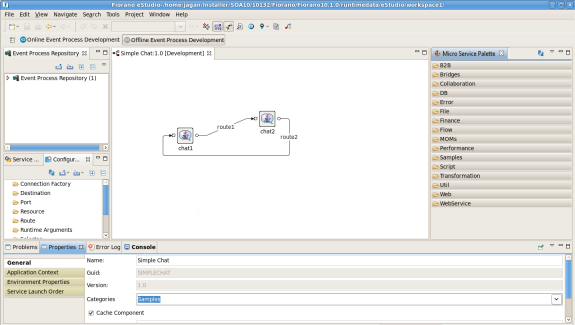
Figure 1: Offline Event Process Development perspective
The Offline Event Process Development perspective comprises of various Views as explained in the following section.
Fiorano Views
Event Process Repository View
The Event Process Repository view is one of the views of the Offline Application Development Perspective, which is available under Window > Show View > Fiorano > Event Process Repository.
Event Process Repository view shows all the event processes created in the offline application development perspective, under various categories.
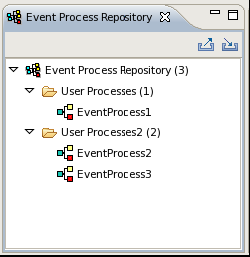
Figure 1: Event Process Repository
Fiorano Orchestration
Offline and Online Event Process Development perspectives are comprised of an editor area Fiorano Orchestrator.
When an Event Process is opened, the design of the event process is shown in the Fiorano Orchestrator.
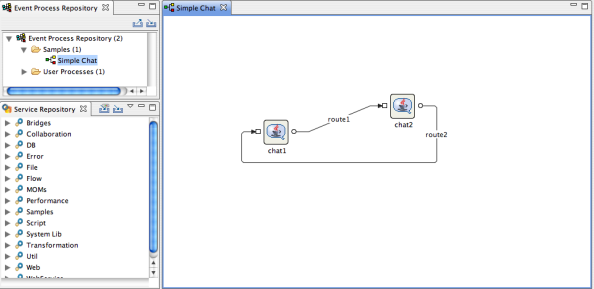
Figure 2: Orchestration Editor
Micro Service Palette
The Micro Service Palette shows the microservices that are present in the eStudio repository. Micro Service Palette contains all the Fiorano Microservices grouped into various categories such as Bridges, Collaboration, DB, Error and File.
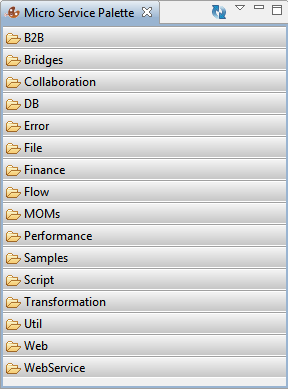
Figure 3: Fiorano Micro Service Palette
Properties
The Properties view displays all the property names and values for any selected item such as: a microservice instance, route, port, and so on. The Properties view is available under Window > Show View > Other > General > Properties.
Placing the cursor on a property shows the property description.
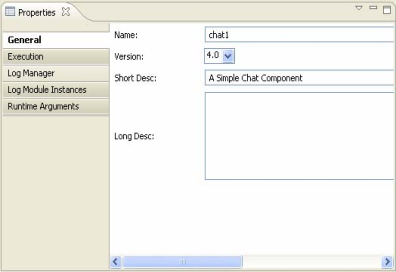
Figure 4: Properties view
Problems
When working in the Fiorano environment, the errors and warnings occurred are displayed in the Problems view. For example, when an Event Process containing errors is saved, the errors are displayed in the Problems view. The Problems view is available under Window > Show View > Other > General > Problems.
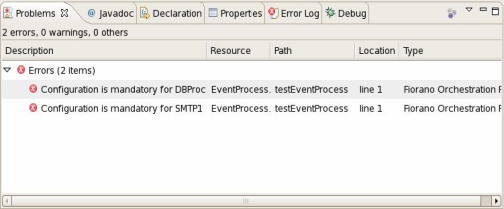
Figure 5: Problems view
By default the problems are grouped by severity level. The grouping can be selected using the Group By menu. Problems view can also be configured to show the warnings and errors associated with a particular resource or group of resources. This is done using the Configure Contents option in the drop-down menu. Additionally, you can add multiple filters to the problems view and enable or disable them as required. Filters can either be additive (any problem that satisfies at least one of the enabled filters will be shown) or exclusive (only problems that satisfy all of the filters will be shown).
Error Log
The Error Log view captures all the warnings and errors logged in the Fiorano environment. The underlying log file (.log) is stored in the .metadata subdirectory of the workspace. The Error Log view is available under Window > Show View > Error Log.
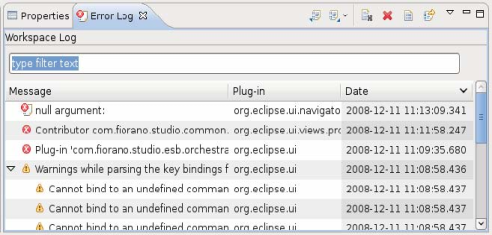
Figure 6: Error Log view
Micro Service Repository (Offline)
Fiorano eStudio provides a Micro Service Repository view which is available under Window > Show View > Fiorano > Micro Service Repository. This shows a categorized list of all available microservices. When the Fiorano eStudio is launched for the first time, the offline repository will be loaded from the installer.
Micorservices which are available only in the micro service repository can be used for composing event processes in eStudio. Microservices can be imported from or exported to a file system or a Fiorano ESB Server from the Micro Service Repository.
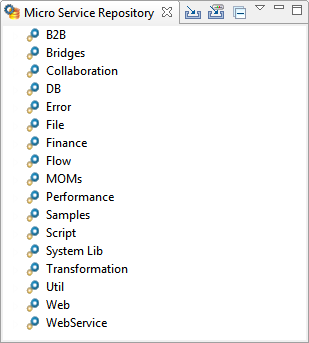
Figure 7: Micro Service Repository
Project Explorer
The Project Explorer view lists all the projects in eStudio. The Project Explorer view is available under Window > Show View > Project Explorer. All the Event Process, Microservice and Mapper projects are shown in Project Explorer view. Structure of the Event process is shown in Figure 8.
To use Version Control, corresponding plug-ins have to be added in drop-ins. If the drop-ins are added, then the version control options will be available in the context menu of a project in this view.
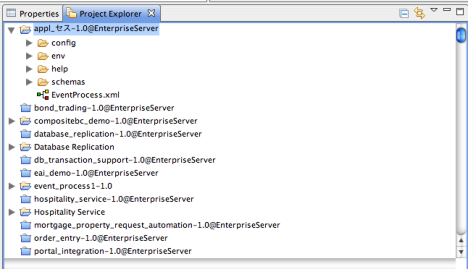
Figure 8: Project Explorer
The Microservice projects are by default shown as closed projects. User can open a project by right-clicking on a project and by selecting the Open Project option. For performance reasons it is advised to close the Microservice projects when they are not being used.
Service Descriptor Editor
Service can be edited using a Service Descriptor editor. To edit a microservice in the service descriptor editor, right-click on the desired service in Micro Service Palette or in Micro Service Repository and click the edit option from the context menu.
The properties of Microservice are divided into three categories:
- Overview – Contains general information about the Service like Name, GUID, version, icon etc.
- Execution – Contains information about microservice ports, runtime arguments, launch options and log configuration.
- Deployment – Contains information about microservice resources, dependencies and general deployment information.
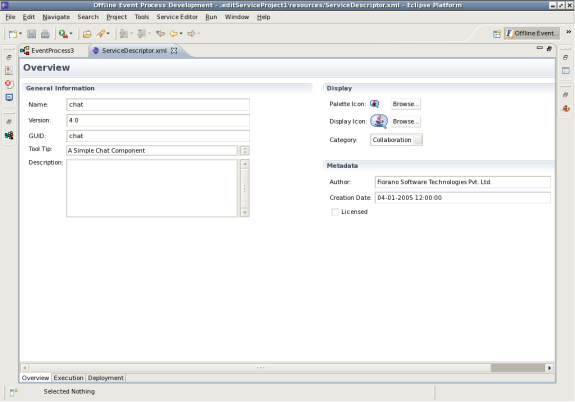
Figure 9: Service Descriptor Editor
Event Processes
Event Processes are composite applications created as event-driven assemblies of Microservice components. They represent the orchestration of data flow across customized microservice-components distributed across the ESB network.Event processes in Fiorano are designed to connect disparate applications in a heterogeneously distributed environment.
Fiorano eStudio enables intuitive visual configuration of all the elements of an event process including the components of the process, the data flow or routes between components, deployment, profile information, and layout. The event process metadata contains all required information in XML format, which is stored in the repository.
Creating New Event Process
To create a new Event Process, perform the following steps:
- Right-click on the Event Process Repository node and select Add Event Process. The Customize Event Process dialog box appears.
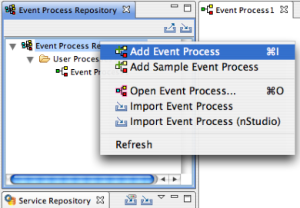
Figure 10: Creating new Event Process
- Specify the name and category of the Event Process project and click Finish. The specified Event Process appears under Event Process Repository node of Event Process Repository view.
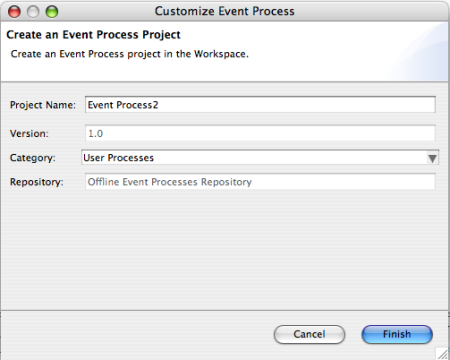
Figure 11: Customize Event process
- To see the graphical view of an Event Process, double-click the event process node, which opens the Fiorano Orchestration editor. For information on composing an Event Process, see Composing Event Processes.
Opening Sample Event Process
Few pre-configured sample event processes are shipped with the Fiorano installation. To open a pre-configured sample event process, perform the following steps:
- Right-click on the Event Process Repository node and select Add Sample Event Process. The Add Sample Event Process dialog box appears.
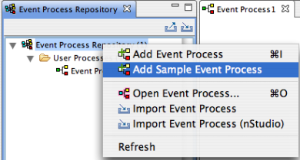
Figure 12: Add Sample Event Processes
- Select the Event Process(s) to be opened by selecting the check box against each entry and click Finish. The selected Event Process(s) appears under Event Process Repository Node.
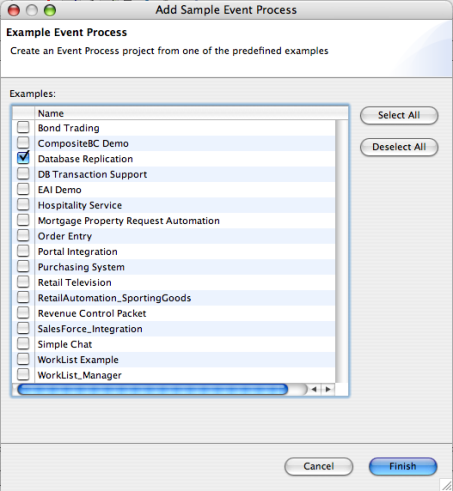
Figure 13: Sample Event Processes
- To see the graphical view of an Event Process, double-click the event process node which opens in the Fiorano Orchestration editor.
Import and Export Event Processes
The following sections describe the procedure for exporting and importing an event process.
Exporting an Event Process
Event Process can be exported to local disk or to a server from the Offline Event Process Development perspective.
To export an Event Process onto a local disk, perform the following steps:
- Right-click on the Event Process to be exported from the Event Process Repository view and select Export from the menu.
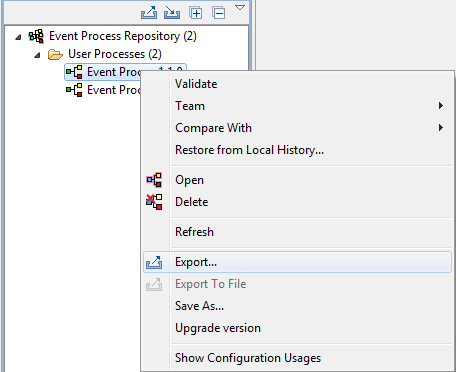
Figure 14: Export Event Process to local disk
- The Export Event Process dialog box provides a list of all the Event Processes selected for exporting along with all the Event Processes referred to by this Event Process and also the named configurations used in those Event Processes. User can choose the artifacts to be exported by selecting the check boxes next to their names.
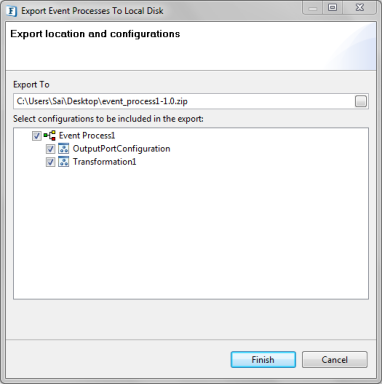
Figure 15: Selecting Dependencies, Configurations to export
- If the exported Event Process has other Event Processes as dependencies and each of those Event Processes in turn have dependencies then all these Event Processes are exported along with their configurations in a chain manner into a single folder as that of the exported Event Porcess and the dependency chain is saved in a metadata file
- Specify the file name and location to save and click OK. The Event Process project along with the dependencies and configurations chosen will be saved as a .zip file.
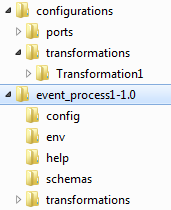
Figure 16: Contents of the exported ZIP file
To export an Event Process to Server, perform the following steps:
- Click on Export Event Process to Server icon located on Event Process Repository view tool bar. The Select Event Process To Be Exported dialog box appears listing all the Event Processes in offline repository and shows the Servers list specified in Fiorano Preferences. For more information on configuring servers please refer to Fiorano Preferences.
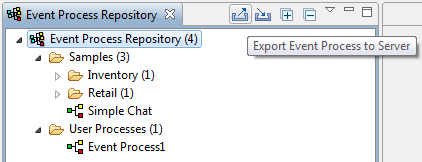
Figure 17: Export Event Process to Server
Select the Event Process and Configurations to be exported and the Server onto which is to be exported and click Finish.
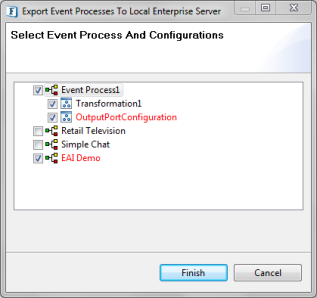
Figure 18: Select Event Process and Configurations to be exported
Importing an Event Process
Event Process can be imported from the local disk and from the Server.
To import an Event Process from local disk, perform the following steps:
- Right-click the Event Process Repository node and select Import Event Process from the menu as shown in figure 2.2.10.
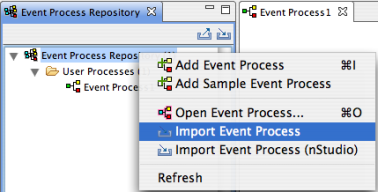
Figure 19: Import Event Process from local disc
Specify the location of Event Process zip file and click OK. A list of all Named Configurations used in the Event Processes referred to by this Event Process and the Named Configurations used in all these Event Processes is also provided. The user can select the Event Processes and configurations to be imported along with the Event Process in the Import Applications wizard. In the absenece of any referred Event Process, import of the selected Event Process fails.
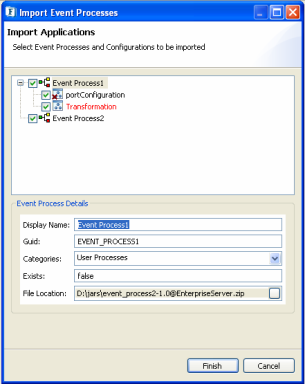
Figure 20: Import Application Wizard
To import an Event Process from the Server, perform the following steps:
- Click on Import Event Process from Server icon present on Event Process Repository view tool bar.

Figure 21: Import Event Process from Server
- Select a Sever dialog box appears listing all servers specified in Fiorano ESB Connection Preferences page.

Figure 22: Select Enterprise Server - Select the Server from which Event Process has to be imported and click OK. The Select Event Process To Be Imported dialog box appears which lists all the Event processes deployed in the server.
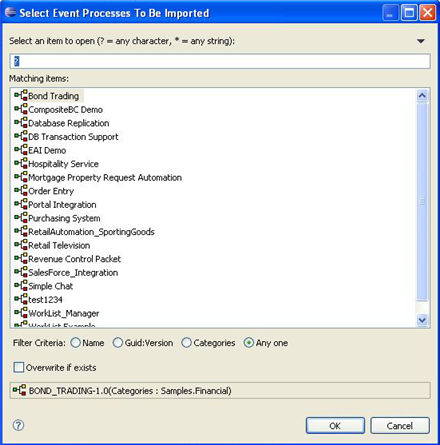
Figure 23: List of Event Process in server
- Select the Event Process to be imported and click OK. The Import Applications wizard lists all the referred applications and configurations of all these applications. Select the Applications and configurations to be imported and click Finish.
Importing nStudio Event Processes
Event Processes that are developed and exported from nStudio can be imported into eStudio using the Import Event Process (nStudio) option present on the context menu of Event Process Repository node.
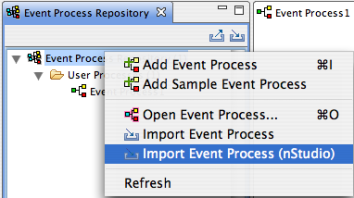
Figure 24: Import nStudio Event Process
Selecting the import option opens an Import Wizard.
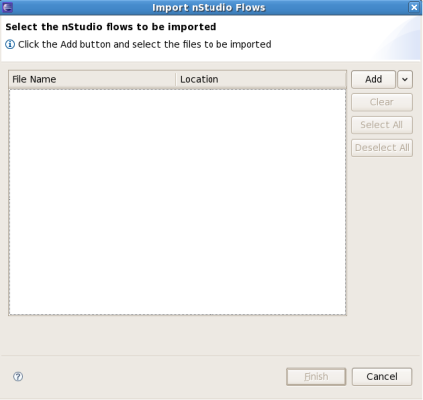
Figure 25: Import nStudio Flows
The Event Processes to be imported can be added to the table by clicking the Add button. A file chooser dialog appears where the nStudio flows can be selected. Multiple files can also be selected at once.
To import all the Event Processes present in a particular folder, select the Add From Folder option present in the drop-down button located on the right side of the add button. All the supported flows present in the folder and all of its sub-folders will be added to the table.
The state of the wizard after adding the flows is shown in the figure below:
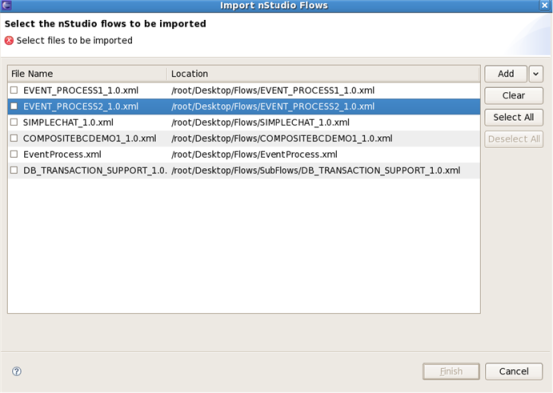
Figure 26: Select nStudio flows to import
After adding the selected files to the table, the flows to be imported can be selected using the check box against each entry present in the table. Click the Finish button to import the selected flows to the current repository. If any of the selected flows already exist in the repository, the user is prompted with a dialog box with the options to overwrite/ignore/rename the flow. The imported flows can be viewed under the Event Process Repository Node.
Micro Service Repository (Offline Event Process Development)
Fiorano eStudio has an independent microservice repository in Offline Event Process Development perspective, which enables services to be configured offline (without connecting to the Enterprise Server).
The microservice repository can be viewed by opening the Micro Service Repository view, which displays categorized services.
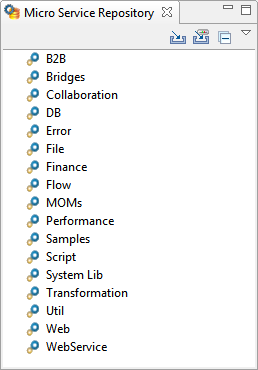
Figure 27: Micro Service repository
Deploying Microservices to Server
A microservice can be deployed to an Enterprise server by right-clicking the component in the Micro Service Repository view and selecting Export Service to Server from the context menu. The Export Service To Server dialog box appears.
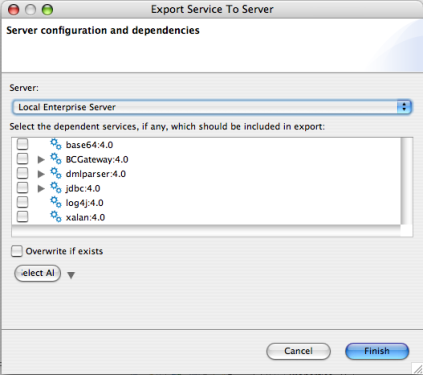
Figure 28: Export service to server
The dependencies are shown in a tree format. This excludes the actual microservice (which gets exported by default). To export any dependencies of this microservice, select the Dependency and click Finish. If the Overwrite If Exists checkbox is selected, the microservices in the server will be over-written by the one in Micro Service Repository, otherwise conflicting services will not be exported to the server.
Fetching Microservices from Server
- The microservices present on server can be imported into the Micro Service Repository by selecting the Import from Server option.
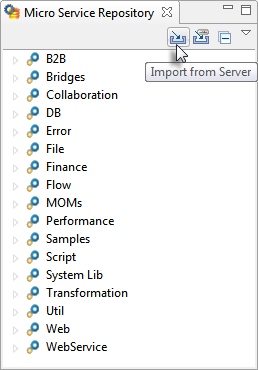
Figure 29: Import from Server option
- This opens Import Service From Server dialog box.
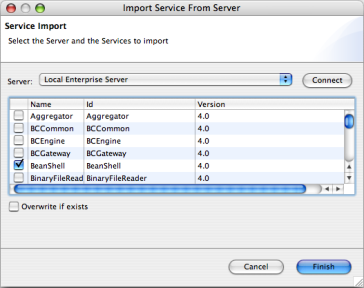
Figure 30: Import service from server
- Select the server from where microservices have to be imported and click the Connect button. This displays all the available microservices in that server.
- Select the microservices to be imported and click the Finish button to import the service.
If the Overwrite If Exists checkbox is selected, the microservice in the Micro Service Repository will be over-written by the one in the server, otherwise conflicting services are not imported from the server.
Exporting Microservices to Local Disk
The microservices in Micro Service Repository can be exported to a local disk by right-clicking the Service and selecting the Export Service To Local Disk option from the context menu. This opens the Export Service To Local Disk dialog box.
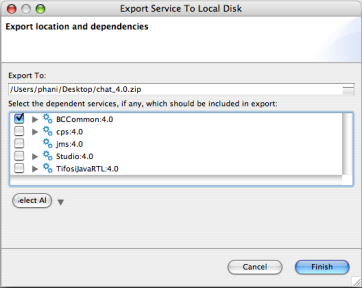
Figure 31: Export service to Local Disk
You can choose the export location, by default only the selected microservice gets included in the export. Select other microservices from the tree to be exported if required, and click the Finish button to export the microservice.
Importing Microservices from Local disk
The components can be imported from the file system. This can be done by clicking the Import From Local Disk button.
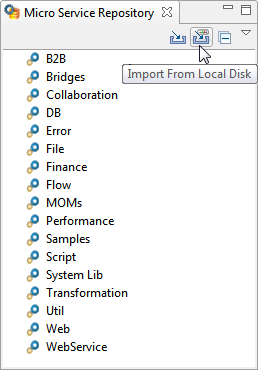
Figure 32: Import from Local Disk button
This opens the Import Services file selection dialog box with which the zip file containing microservices on the disk is selected. Upon selection a dialog box is shown in which the microservices in the zip file are shown in the form of a dependency tree.
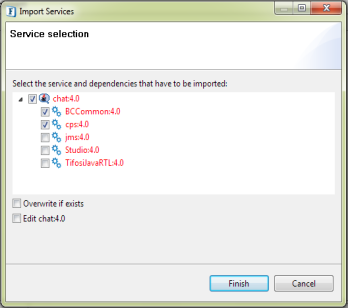
Figure 33: Import services dialog box
Components that are already present are labeled in red, and those not present in the repository are labeled in black.
- If the Overwrite If Exists checkbox is selected, microservice in the Micro Service Repository will be over written by the one in the zip file, otherwise conflicting services are not imported from the local disk.
- If the Edit <Service> (For example, Edit chat:4.0 in the figure above) checkbox is selected, after clicking Finish, an information dialog appears.

Figure 34: Service Import dialog box
Clicking OK opens ServiceDescriptor.xml window in which the user can edit the microservice and save it. Closing the ServiceDescriptor.xml finishes the import of microservice from Local Disk.
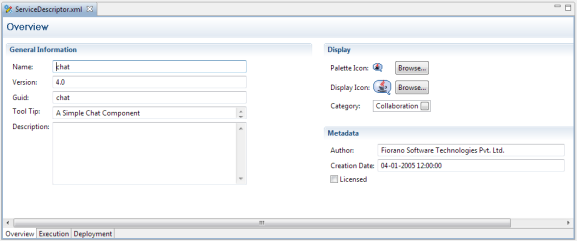
Figure 35: ServiceDescriptor.xml